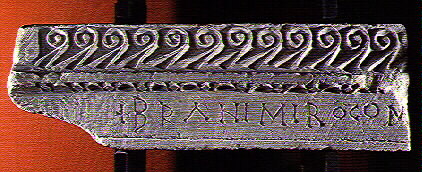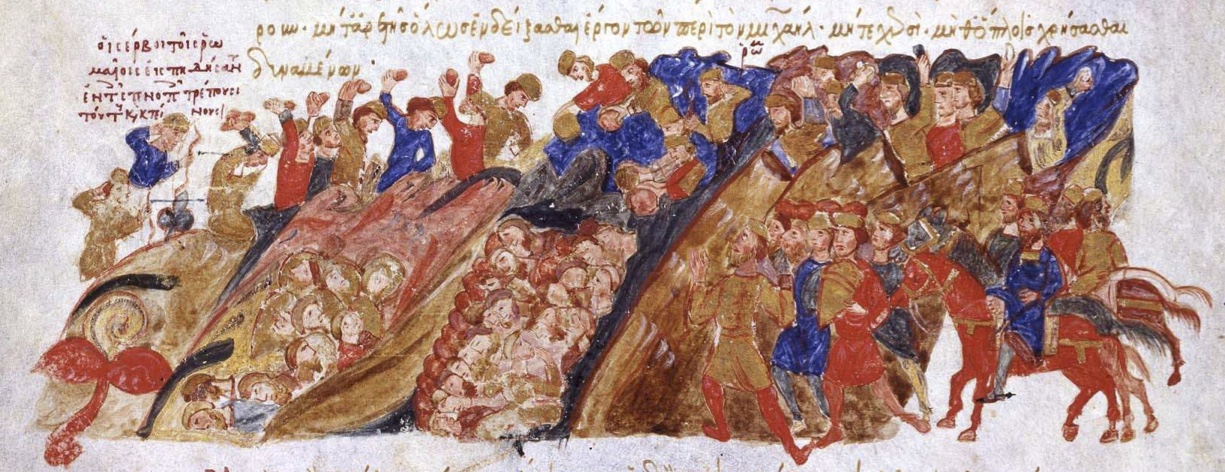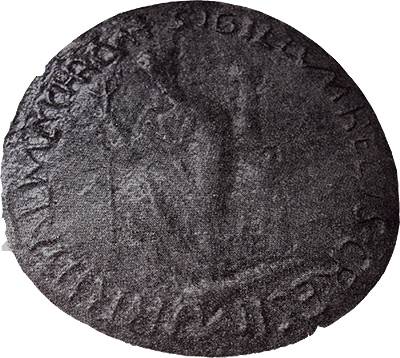|
Domagojević Dynasty
Domagojević dynasty ( hr, Domagojevići) was a native Croatian dynasty that ruled in Croatia, probably from 864 until 892, with interruptions. After the Trpimirović dynasty, they are the most well known Croatian dynasty in the Early Middle Ages. The dynasty was named after Domagoj, the first member of dynasty known by name. The most famous of the Domagojević dynasty members are: Domagoj (founder) and Branimir. The relation between Domagoj and Branimir is controversial. Some historians think that Branimir was a son of Domagoj, some think they were in some other family relation. Others think that there were no family relations between them. Dukes of Croatia * Domagoj (864–876) * Unnamed son of Domagoj (876–878) *Branimir (879–892) See also * List of rulers of Croatia *Duchy of Croatia The Duchy of Croatia (; also Duchy of the Croats, hr , Kneževina Hrvata; ) was a medieval state that was established by White Croats who migrated into the area of the form ... [...More Info...] [...Related Items...] OR: [Wikipedia] [Google] [Baidu] |
Duchy Of Croatia
The Duchy of Croatia (; also Duchy of the Croats, hr , Kneževina Hrvata; ) was a medieval state that was established by White Croats who migrated into the area of the former Roman province of Dalmatia 7th century CE. Throughout its existence the Duchy had several seats – namely, Klis, Solin, Knin, Bijaći and Nin. It comprised the '' littoral –'' the coastal part of today's Croatia ''–'' except Istria, and included a large part of the mountainous hinterland as well. The Duchy was in the center of competition between the Carolingian Empire and the Byzantine Empire for rule over the area. Croatian rivalry with Venice emerged in the first decades of the 9th century and would continue through the following centuries. Croatia also waged battles with the Bulgarian Empire (founded ; Bulgar-Croatian relations improved greatly afterwards) and with the Arabs; it also sought to extend its control over important coastal cities under the rule of Byzantium. Croatia experienced ... [...More Info...] [...Related Items...] OR: [Wikipedia] [Google] [Baidu] |
List Of Rulers Of Croatia
This is a complete list of rulers of Croatia under domestic ethnic and elected dynasties during the Croatian Kingdom (925–1918). This article follows the monarch's title number according to Hungarian succession for convenience. For example, the Hungarian monarch Béla IV is according to Croatian succession correctly titled Béla III. This is because Hungarians had a king named Béla prior to the incorporation of Croatia under the Hungarian Crown but the Croats did not. Early history The details of the arrival of the Croats in the Balkans are sparsely documented by reliable historical sources. Around 626 CE, Croats migrated from White Croatia (around present-day Galicia (Central Europe), Galicia) at the invitation of the List of Byzantine emperors, Byzantine Emperor Heraclius. According to a legend recorded in the 10th-century ''De Administrando Imperio'', the Croats came to their present region under the leadership of five brothers (called Kloukas, Lobelos, Kosentzis, Mouchlo, ... [...More Info...] [...Related Items...] OR: [Wikipedia] [Google] [Baidu] |
Domagoj Of Croatia
Domagoj ( la, Domagoi) was Duke of Croatia from 864 to 876, and the founder of the Domagojević dynasty. He usurped the Croatian throne after the death of Trpimir I and expelled his sons. He took a more active role in the Adriatic Sea than his predecessors, encouraged the use of force and waged many wars, specifically with the Arabs, Venice and the East Francia. Domagoj's belligerence and the tolerance and support of piracy caused bad relations with Pope John VIII, which was further worsened after Domagoj showed no mercy to his conspirators. Formally a Frankish vassal, he used to his advantage the Frankish succession crisis and started a successful revolt against Carloman of Bavaria. After his death in 876, Domagoj was succeeded by his son who was deposed and expelled by Zdeslav in 878. Reign Wars with the Venetians and Arabs Following the death of Duke Trpimir I in around 864, he was succeeded either by his son Zdeslav, who was shortly after deposed by Domagoj in a civil wa ... [...More Info...] [...Related Items...] OR: [Wikipedia] [Google] [Baidu] |
Branimir Of Croatia
Branimir ( la, Branimiro) was a ruler of Croatia who reigned as duke ( hr, knez) from 879 to 892. His country received papal recognition as a state from Pope John VIII on 7 June 879. During his reign, Croatia retained its sovereignty from both Frankish and Byzantine rule and became ''de jure'' independent.''Hrvatski leksikon'' (1996–1997) Stjepan Antoljak, Pregled hrvatske povijesti, Split 1993., str. 43. Reign Rise to power In 879, Branimir had Duke Zdeslav, a supporter of the Byzantine Empire, killed near Knin in a rebellion that he led. Approval from the Holy See was brought about by Branimir's own actions to bring the Croats further away from the influence of Byzantium and closer to Rome. Duke Branimir wrote to Pope John VIII affirming this split from Byzantine and commitment to the Roman Papacy. During the solemn divine service in St. Peter's church in Rome in 879, Pope John VIII gave his blessing to the duke and the whole Croatian people, about which he informed Bran ... [...More Info...] [...Related Items...] OR: [Wikipedia] [Google] [Baidu] |
Croats
The Croats (; hr, Hrvati ) are a South Slavic ethnic group who share a common Croatian ancestry, culture, history and language. They are also a recognized minority in a number of neighboring countries, namely Austria, the Czech Republic, Germany, Hungary, Italy, Montenegro, Romania, Serbia, Slovakia and Slovenia. Due to political, social and economic reasons, many Croats migrated to North and South America as well as New Zealand and later Australia, establishing a diaspora in the aftermath of World War II, with grassroots assistance from earlier communities and the Roman Catholic Church. In Croatia (the nation state), 3.9 million people identify themselves as Croats, and constitute about 90.4% of the population. Another 553,000 live in Bosnia and Herzegovina, where they are one of the three constituent ethnic groups, predominantly living in Western Herzegovina, Central Bosnia and Bosnian Posavina. The minority in Serbia number about 70,000, mostly in Vojvodina. The ... [...More Info...] [...Related Items...] OR: [Wikipedia] [Google] [Baidu] |
Basil I
Basil I, called the Macedonian ( el, Βασίλειος ὁ Μακεδών, ''Basíleios ō Makedṓn'', 811 – 29 August 886), was a Byzantine Emperor who reigned from 867 to 886. Born a lowly peasant in the theme of Macedonia, he rose in the Imperial court. He entered into the service of Theophilitzes, a relative of Emperor Michael III (r. 842–867), and was given a fortune by the wealthy Danielis. He gained the favour of Michael III, whose mistress he married on the emperor's orders, and was proclaimed co-emperor in 866. He ordered the assassination of Michael the next year. Despite his humble origins, he showed great ability in running the affairs of state. He was the founder of the Macedonian dynasty. He was succeeded upon his death by his son (perhaps actually Michael III's son) Leo VI. From peasant to emperor Basil was born to peasant parents in late 811 (or sometime in the 830s in the estimation of some scholars) at Chariopolis in the Byzantine theme of Macedonia (an ... [...More Info...] [...Related Items...] OR: [Wikipedia] [Google] [Baidu] |
Madrid Skylitzes
The ''Madrid Skylitzes'' is a richly illustrated illuminated manuscript of the ''Synopsis of Histories'' ( el, Σύνοψις Ἱστοριῶν, ), by John Skylitzes, which covers the reigns of the Byzantine emperors from the death of Nicephorus I in 811 to the deposition of Michael VI Bringas, Michael VI in 1057. The manuscript was produced in Sicily in the 12th century, and is now at the Biblioteca Nacional de España in Madrid, with the shelfmark MS Graecus Vitr. 26–2. Other names for it are and . Apart from the very fragmentary 6th-century Alexandrian World Chronicle, it is the only surviving illustrated manuscript of a Greek chronicle, and includes 574 miniatures. It is unclear whether these illustrations are copies of earlier Byzantine images or were newly created specifically for this copy. Bibliography * Color facsimile edition by Militos (Μίλητος) Publishers, . * Vasiliki Tsamakda, The Illustrated Chronicle of Ioannes Skylitzes, Leiden 2002. * Bente Bj� ... [...More Info...] [...Related Items...] OR: [Wikipedia] [Google] [Baidu] |
Trpimirović Dynasty
Trpimirović dynasty ( hr, Trpimirovići) was a native Croatian dynasty that ruled in the Duchy and later the Kingdom of Croatia, with interruptions by the Domagojević dynasty from 845 until 1091. It was named after Trpimir I, the first member and founder. The most prominent rulers of the Trpimirović Dynasty include Tomislav (first king of Croatia), Petar Krešimir IV and Demetrius Zvonimir. The house gave four dukes, thirteen kings and a queen. Since its mid-9th century foundation, the house reached independent rule at some later point and dissolved at the end of 11th century. During that time, the state had slight territorial changes, most notably in Bosnia and southern Dalmatia, where the wars against Venetians and others were waged. Dukes and Kings of Croatia The Trpimirović dynasty was a ruling dynasty of Croatia from the 9th to the 11th century. The ruling estate ( la, terra regalis) of the Trpimirović dynasty was located in the area between Trogir and Split (today ... [...More Info...] [...Related Items...] OR: [Wikipedia] [Google] [Baidu] |
Early Middle Ages
The Early Middle Ages (or early medieval period), sometimes controversially referred to as the Dark Ages, is typically regarded by historians as lasting from the late 5th or early 6th century to the 10th century. They marked the start of the Middle Ages of European history, following the decline of the Western Roman Empire, and preceding the High Middle Ages ( 11th to 13th centuries). The alternative term ''late antiquity'', for the early part of the period, emphasizes elements of continuity with the Roman Empire, while ''Early Middle Ages'' is used to emphasize developments characteristic of the earlier medieval period. The period saw a continuation of trends evident since late classical antiquity, including population decline, especially in urban centres, a decline of trade, a small rise in average temperatures in the North Atlantic region and increased migration. In the 19th century the Early Middle Ages were often labelled the ''Dark Ages'', a characterization based on t ... [...More Info...] [...Related Items...] OR: [Wikipedia] [Google] [Baidu] |
Iljko Of Croatia
According to older historiography, Iljko was a duke ('' hr, knez'') in Croatia from 876 until 878, and a member of the Domagojević dynasty, probably the son of Domagoj. However, it has later generally been accepted that his name was a consequence of a wrong translation of the Chronicle of Dandolo, a Latin text written by Andrea Dandolo in the 14th century.Mužić Ivan: Hrvatska povijest devetoga stoljeća, Split 2007, p. 131 The name of the unknown prince was probably the result of Dandolo's fantasy. During the specified timespan a son of Domagoj ruled Croatia, but his name was not preserved. See also *Domagojević dynasty *List of rulers of Croatia This is a complete list of rulers of Croatia under domestic ethnic and elected dynasties during the Croatian Kingdom (925–1918). This article follows the monarch's title number according to Hungarian succession for convenience. For example, the ... References Dukes of Croatia 9th-century Croatian people 9th-century ... [...More Info...] [...Related Items...] OR: [Wikipedia] [Google] [Baidu] |
Croatian Dynasties
Croatian may refer to: *Croatia *Croatian language *Croatian people *Croatians (demonym) See also * * * Croatan (other) * Croatia (other) * Croatoan (other) * Hrvatski (other) * Hrvatsko (other) * Serbo-Croatian (other) Serbo-Croatian or Croato-Serbian, rarely Serbo-Croat or Croato-Serb, refers to a South Slavic language that is the primary language of Serbia, Croatia, Bosnia and Herzegovina, and Montenegro. Serbo-Croatian, Serbo-Croat, Croato-Serbian, Croato-Serb ... {{disambiguation Language and nationality disambiguation pages ... [...More Info...] [...Related Items...] OR: [Wikipedia] [Google] [Baidu] |
Lists Of Monarchs
List of monarchs may refer to: *List of current sovereign monarchs *List of current constituent monarchs *List of living former sovereign monarchs *List of monarchs by nickname *List of fictional monarchs *A king list, used as an early form of periodisation By current countries Note: The list includes both current monarchies and current countries that have abolished the monarchy. *Afghanistan *Albania *Andorra *Antigua and Barbuda *Armenia *Australia * Austria (and Austria-Hungary) *The Bahamas *Bahrain *Barbados *Belarus *Belize *Belgium *Benin *Bosnia *Bhutan *Brazil *Brunei *Bulgaria *Burundi *Cambodia *Canada *Central Africa *China *Croatia *Czechia *Denmark *Egypt *Estonia *Eswatini *Ethiopia *Fiji *Finland *France *The Gambia *Georgia *Ghana *Germany *Grenada *Greece *Guyana *Haiti *Hungary *Iceland *India *Iran *Iraq *Ireland *Israel *Italy *Jamaica *Japan *Jordan *Kenya *Korea *Kuwait *Laos *Lesotho *Libya *Liechtenstein *Lithuania *Luxembourg *Madagascar *Malawi *Malaysia ... [...More Info...] [...Related Items...] OR: [Wikipedia] [Google] [Baidu] |
.png)



.png)



